

Join BirdNote tomorrow, November 30th!
Illustrator David Sibley and actor H. Jon Benjamin will face off in the bird illustration battle of the century during BirdNote's Year-end Celebration and Auction!
My wife and I were on a whale-watching boat off Maui in May. I was on the side of the boat, scanning the horizon for birds. It was a pretty quiet day on the water bird-wise, just a White-tailed Tropicbird and Wedge-tailed Shearwater to keep me interested.
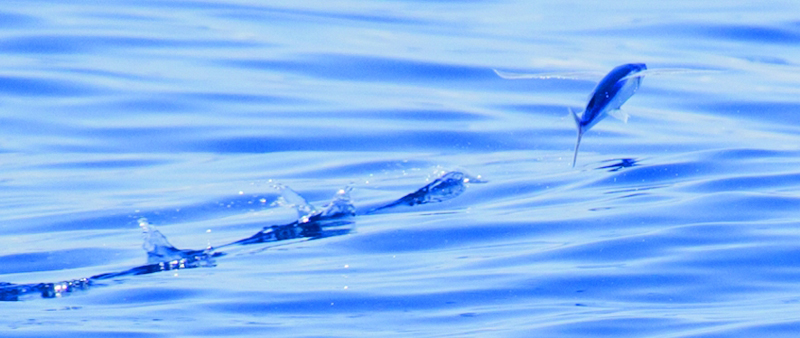
My wife isn't a birdwatcher but she will often point out birds for me to identify, or at least attempt to identify. She called from the other side of the boat to ask me what type of birds are small and fly really close to the surface of the water. No alcids in these tropical waters; phalaropes could be possible. "But they were really fast," she added.
I was stumped. Minutes later, a small silvery flash jetted away from the bow of the boat, skimming the waves before it disappeared beneath the surface, twenty yards from where it started.
"Flying fish!"
I didn't have many birds to watch, and I don't frequently find myself in the tropical waters where flying fish are found. So I stared down at the water, waiting for the next glistening bullet to propel itself sideways from the boat. They were so small and so fast (and so infrequent) that it was nearly impossible to get my binoculars on them for any length of time. These fish must be impossible to study, I thought.
That's why the book The Amazing World of Flyingfish, from bird book author Steve N.G. Howell, is so impressive. Not only was the author able to collect in-focus photographs of animals that are above water for only seconds at a time, but he managed to capture the brilliant colors and textures that would otherwise go by in a blur.
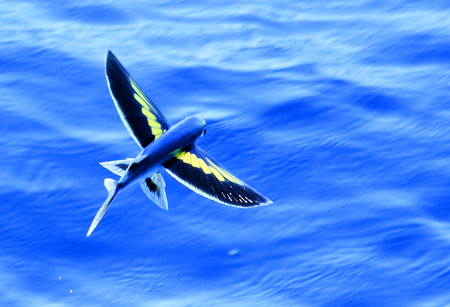
As an internationally renowned expert (and author) on pelagic birds such as albatrosses, petrels, and shearwaters, Steve Howell has spent thousands of hours at sea. On a cruise from New Zealand to Japan, Steve focused his attention — and camera — on flying fish in the tropical waters near the equator, where birdlife is minimal.
Steve photographed 51 "types" of flying fish on that trip, some of which represent different species, others which may be different ages or sexes of the same species. There are about sixty species in this commercially valuable family of fish. But published descriptions of these species are based on museum specimens, not those in the wild —in flight— where "fin measurements" are less relevant and the colors are more brilliant.
To name all these types, Steve and his cohorts got quite creative: Yellow Bandwing, Black-eyed Bushwing, Rosy-veined Clearwing, Solomon Cerulean, Fenestrated Naffwing, and Pixellated Midget are some of my favorites.
As Steve writes: "In coming years I hope a greater awareness of flyingfish will develop, and more at-sea identification keys will be compiled for different parts of the oceans. One day, presumably, we'll be able to link the informal names we created to the scientific names, but for now the hobby of flyingfish-watching is in its infancy."
In the meantime, this book is a fun study of a colorful — and enigmatic — family of animals. And it gives me another flying object to look for the next time I'm in tropical waters.
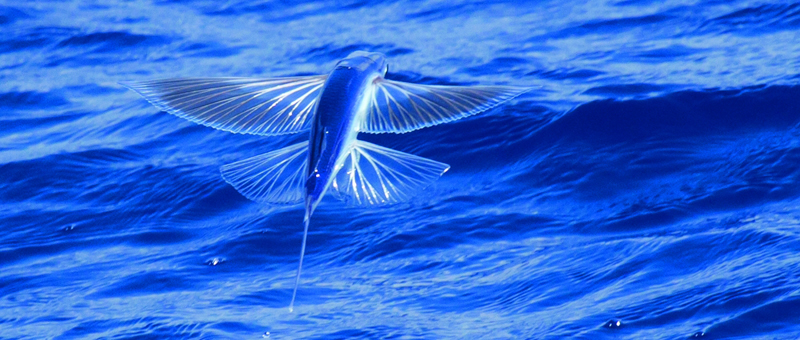
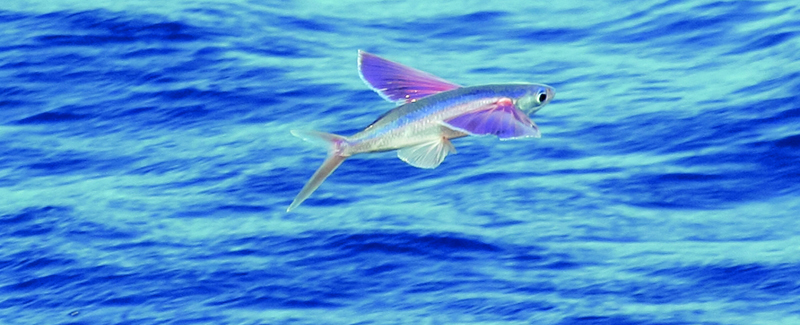
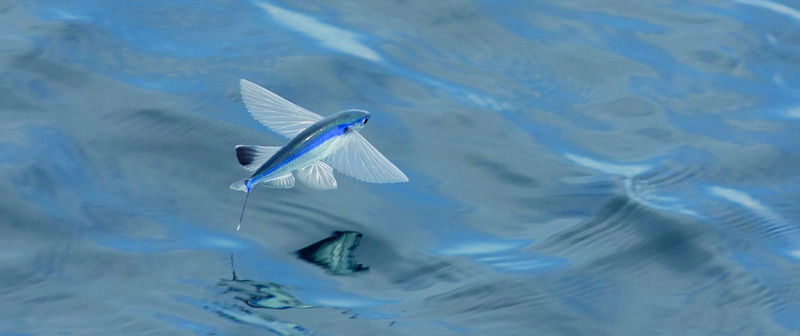
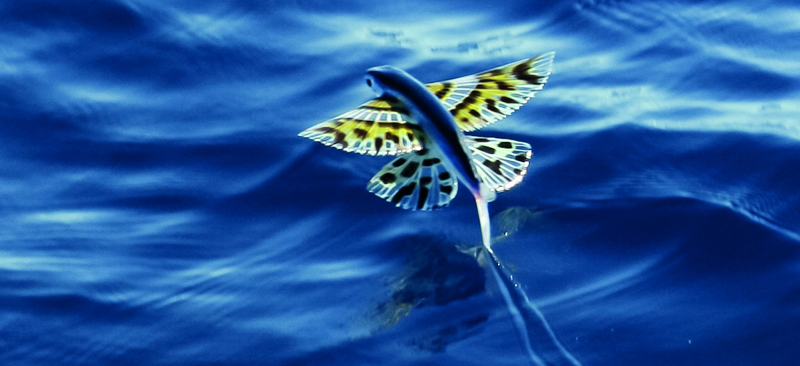
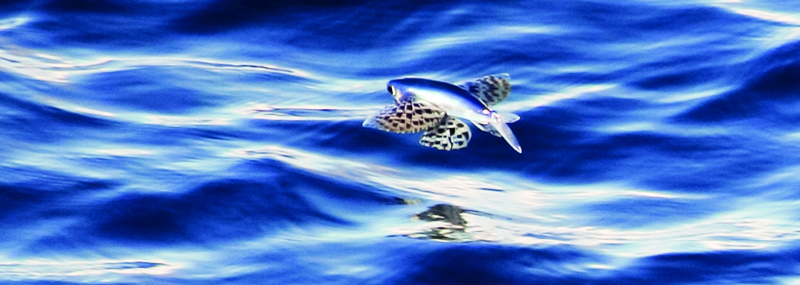
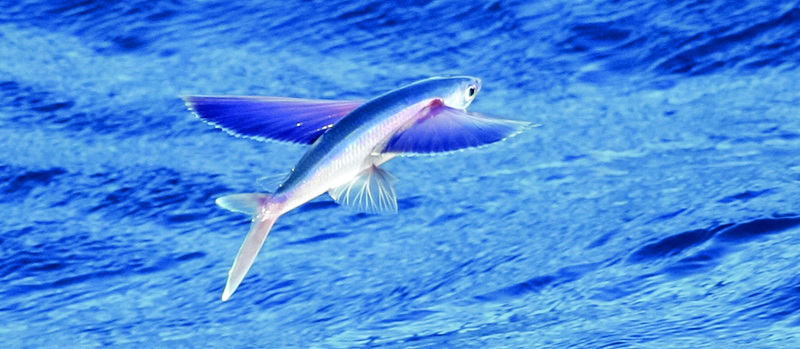
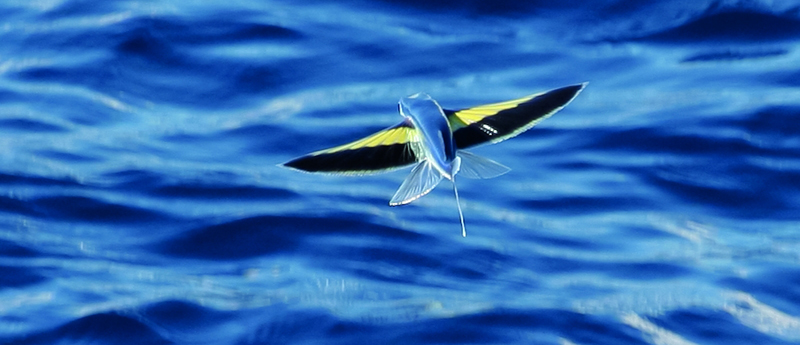
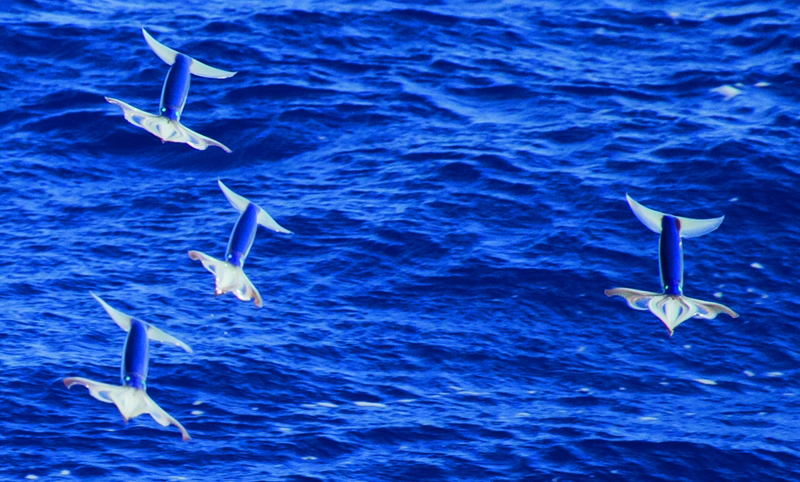
###
All images © Princeton University Press Birds and Nature Books. The Amazing World of Flyingfish, by Steve N. G. Howell. Used with permission.

